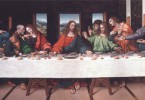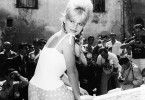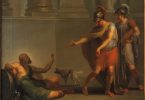Picasso Black and White
Written by Christine Ritenis
New York Art Correspondent for Connoisseur Magazine

Her shoulder is sharp and angular, her torso slender, and strands of moist-looking hair drape her face, as if effort had caused them to slip out of a hair clip or tie. Her upper body leans forward, its full weight on the iron, and her lips are a straight line. “Woman Ironing,” an oil painting by Pablo Picasso that is currently on display in Picasso Black and White at the Solomon R. Guggenheim Museum in New York, gives the impression that the ironer has labored for a lifetime and that the backbreaking task will occupy her until death. Created during Picasso’s Blue Period, the painting evokes many of the themes that most concerned him then—loneliness, poverty, and despair—and demonstrates his fascination with solitary figures. There are touches of yellow, perhaps a spot of red, but the tones are overwhelmingly gray, reflecting the woman’s grim reality. Despite the wretchedness portrayed, the oil is beautiful, heart-stopping even.
It is appropriate that an exhibition focusing on Picasso’s black and white palette is shown at the Guggenheim, where the building structure is unmatched in its ability to display the work chronologically. The visitor begins on the ground floor, winding his way up a circular ramp to study art that dates from 1904, when “Woman Ironing” was painted, to 1971. Picasso is not identified with one black and white period. These 118 paintings, sculptures, and works on paper, organized by Carmen Gimenez, the museum’s Curator of Twentieth Century Art, demonstrate how the motif of black, white, and gray evolved throughout his career. “Reported to have said that color ‘weakens,’ Picasso purged and isolated color from his work in order to highlight its formal structure and assert its autonomy.”
Is it a breast, a penis? A man or a woman? Is it even human? These are the questions that arise when looking at the oil painting “Figure,” completed in 1928. Picasso created this spectacular and strange stick drawing-like image while pursuing an interest in wire construction and sculpture. A correlation is clear. The disparity in his work with spare colors over time is also obvious when one contrasts the clearly outlined and shaded “Woman Ironing” with the stark and nearly unrecognizable “Figure.”
Later pieces, including “Guernica” studies (1937) and “The Charnel House” (1944-1945) were motivated by Picasso’s political concerns. “Guernica” depicts a small town in the Basque countryside that had been bombed recently, while “The Charnel House” reflected his horror at news of concentration camps in Germany. These are darker and more complex than his earlier work.
Though a prolific and influential twentieth century artist who is credited with, among other achievements, founding Cubism and influencing the Surrealist movement, Picasso’s recurrent interest in monochromatic tones is less well known, but equally fascinating. The Guggenheim show includes numerous works that have not been exhibited or published before, many belonging to the Picasso family, suggesting a personal connection to the artist.



